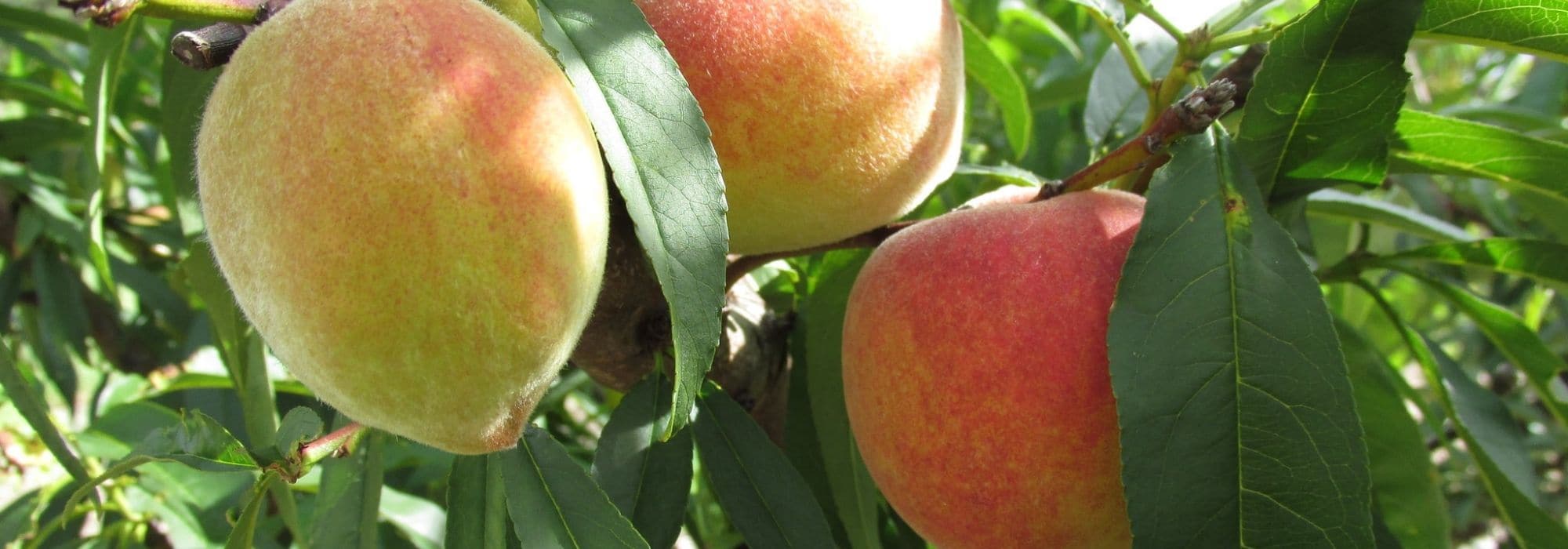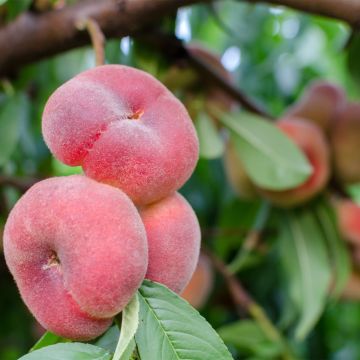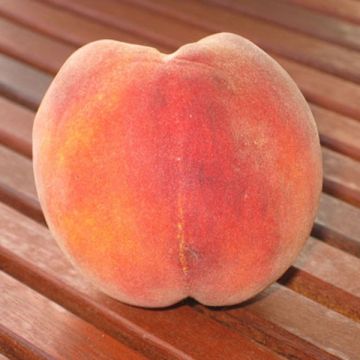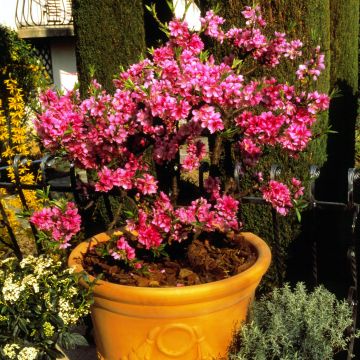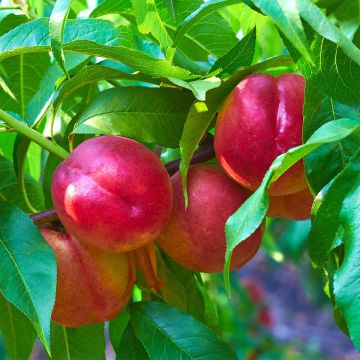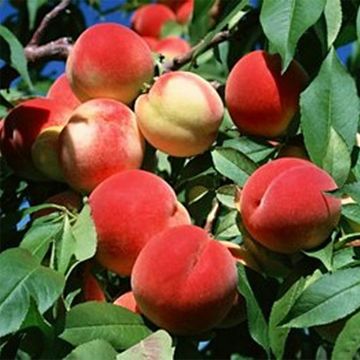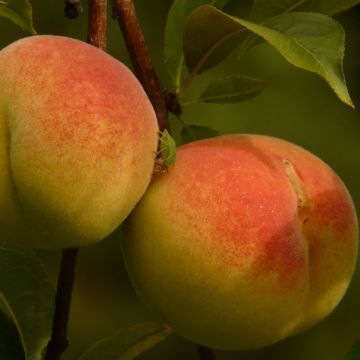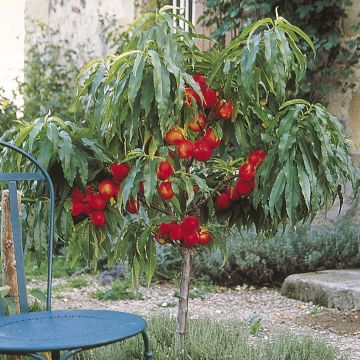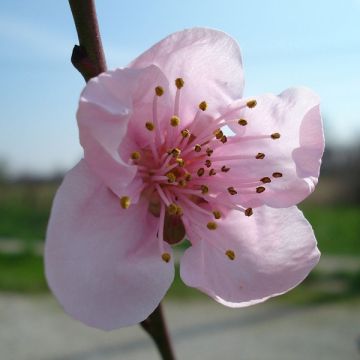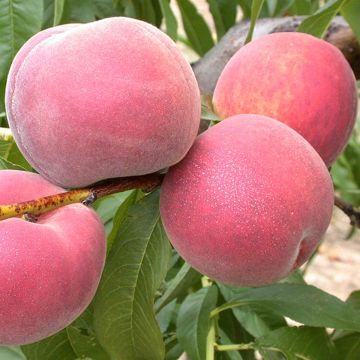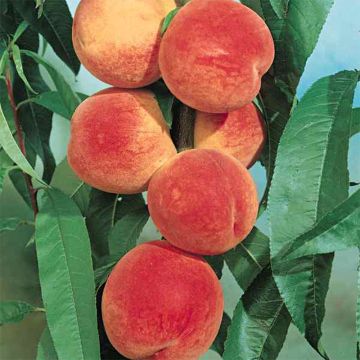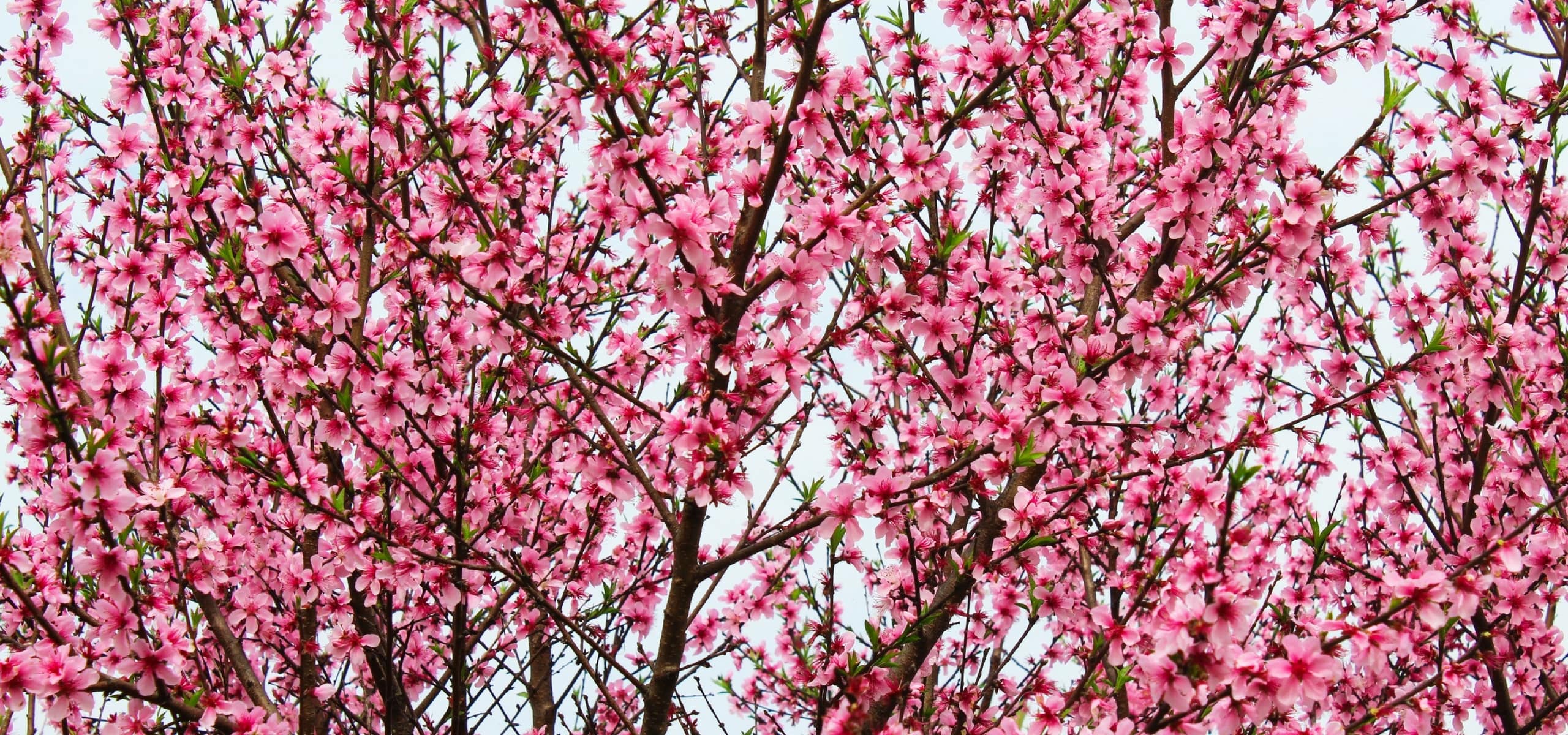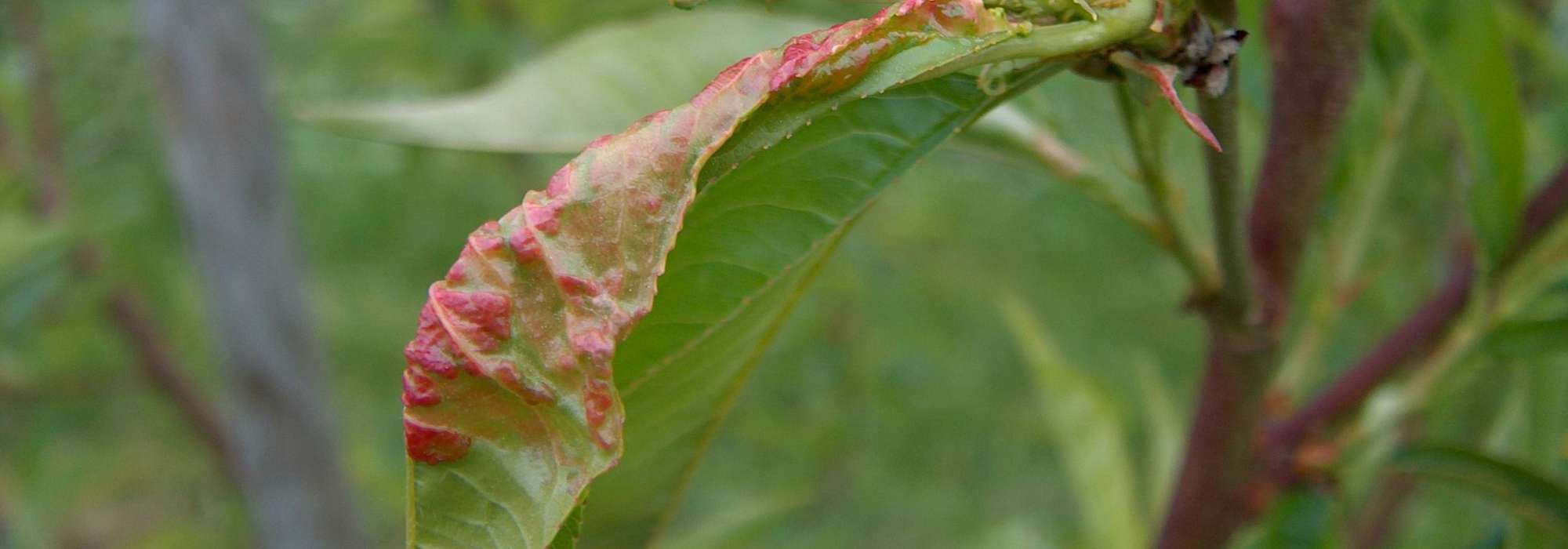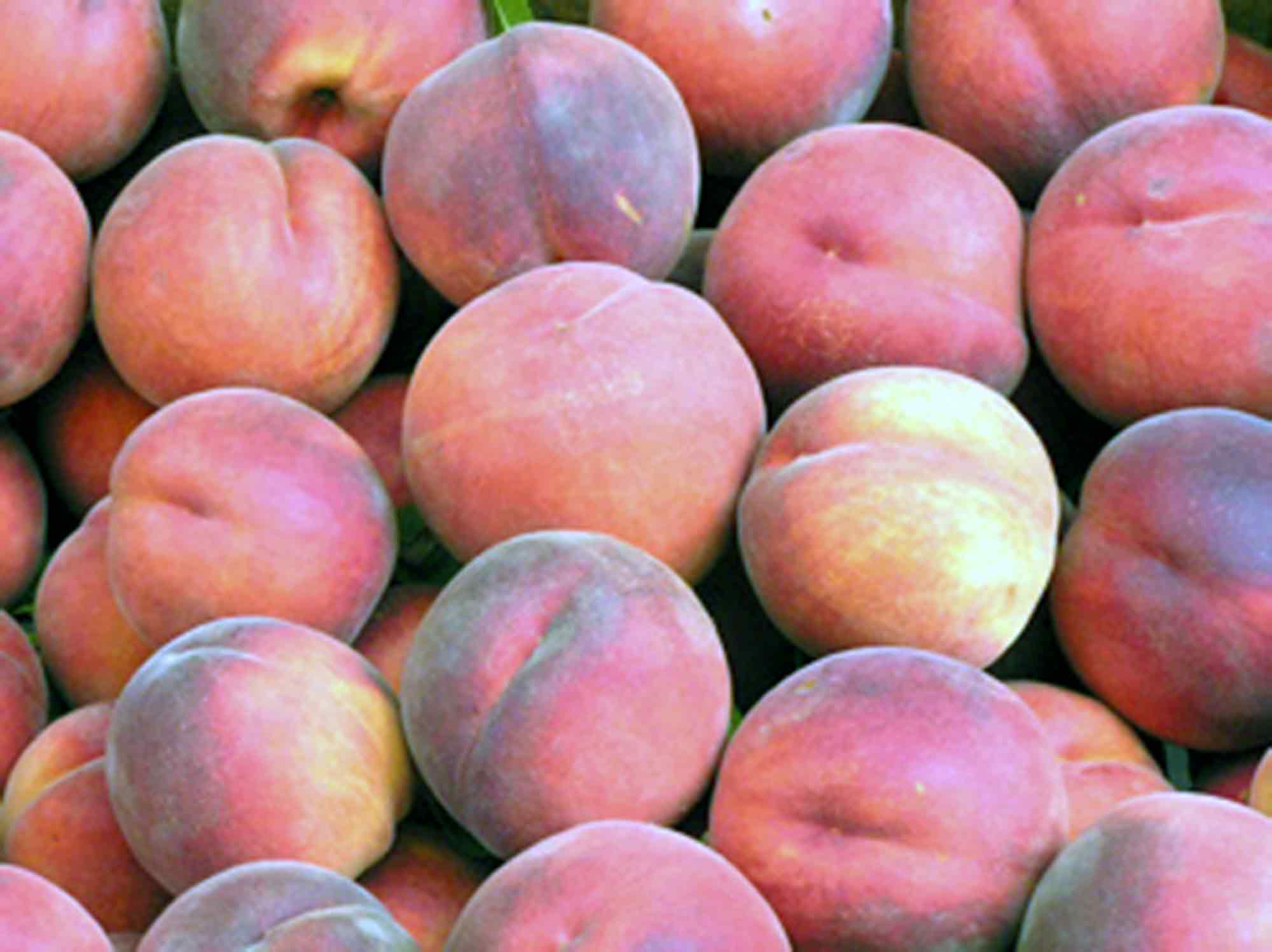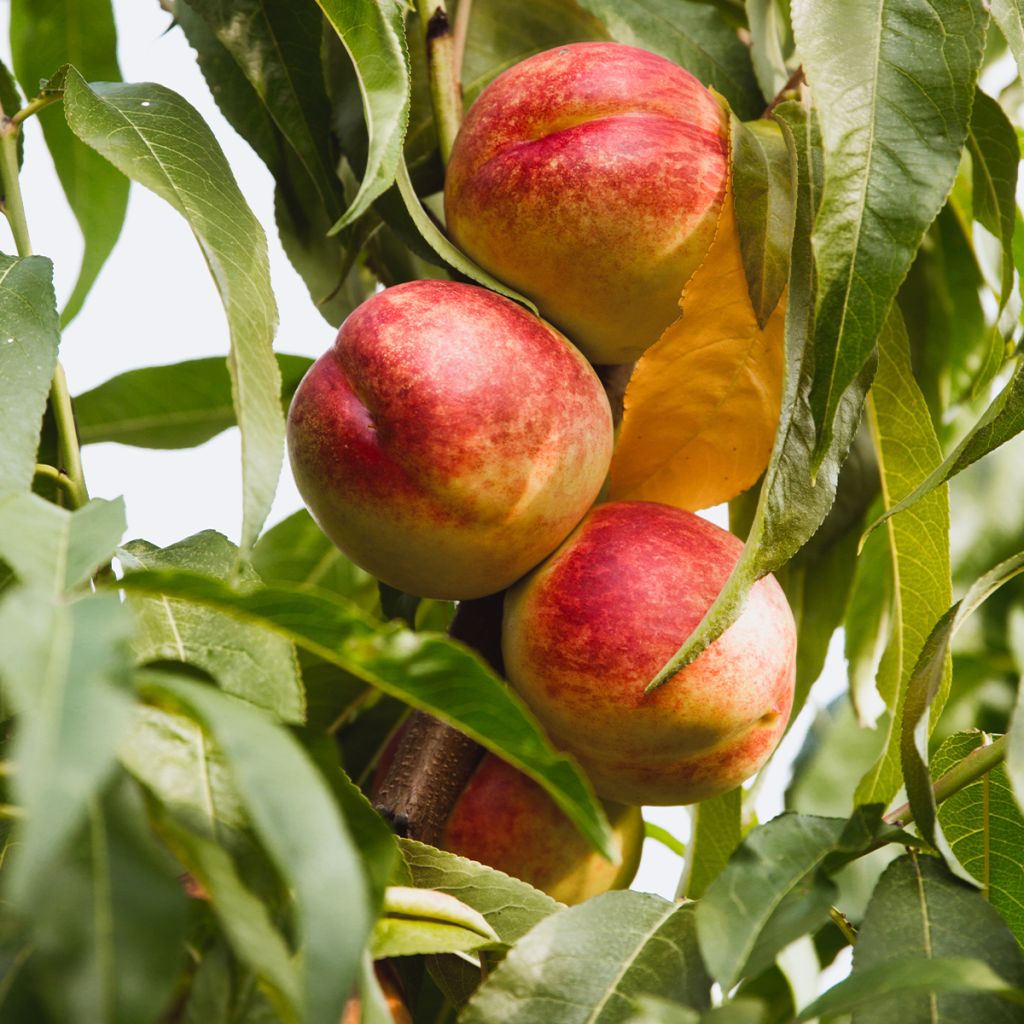

Prunus Flavortop - Nectarine Tree
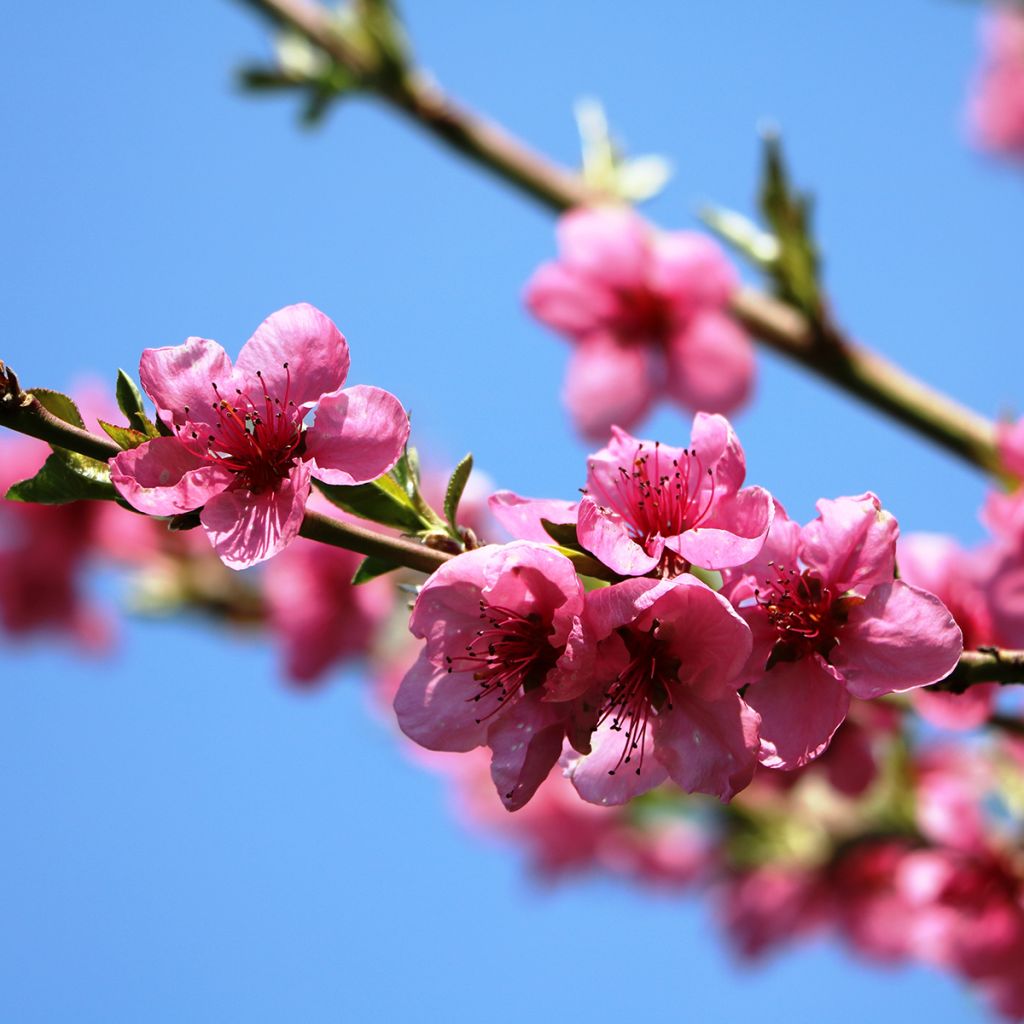

Prunus Flavortop - Nectarine Tree
Prunus Flavortop - Nectarine Tree
Prunus persica-nucipersica Flavor Top
Nectarine
sujet reçu en très bon état et bien emballé. J'espère que l'emplacement que je lui ai réservé lui conviendra.
Jacques, 29/11/2023
Special offer!
Receive a €20 voucher for any order over €90 (excluding delivery costs, credit notes, and plastic-free options)!
1- Add your favorite plants to your cart.
2- Once you have reached €90, confirm your order (you can even choose the delivery date!).
3- As soon as your order is shipped, you will receive an email containing your voucher code, valid for 3 months (90 days).
Your voucher is unique and can only be used once, for any order with a minimum value of €20, excluding delivery costs.
Can be combined with other current offers, non-divisible and non-refundable.
Home or relay delivery (depending on size and destination)
Schedule delivery date,
and select date in basket
This plant carries a 6 months recovery warranty
More information
We guarantee the quality of our plants for a full growing cycle, and will replace at our expense any plant that fails to recover under normal climatic and planting conditions.
Description
Prunus persica nucipersa 'Flavortop' is a variety known for being among the most flavourful of all necatrine trees, and is preferred by those who truly want the best. Very vigorous, this Nectarine tree is also very productive and self-fertile. In April it is covered with dark pink flowers, rivaling the most beautiful ornamental trees. In summer, large nectarines with red-orange skin appear, hiding succulent, sweet, and very fine yellow flesh. These fruits can be enjoyed fresh or cooked in desserts or jams. Like the Peach tree, it is susceptible to leaf curl and requires regular treatments starting from late winter. Plant it in a sunny spot, in loose, fertile soil that remains slightly moist in summer.
The Nectarine tree is a member of the large Rosaceae family, which includes most of our fruit trees (Apple trees, Pear trees, Cherry trees, Plum trees). The species name "persica" was given to the peach tree because it was thought to originate from Persia. In reality, all cultivated forms of peach trees are native to northern China. The Nectarine tree, in Latin Prunus persica nucipersa, is the result of a natural mutation of the peach tree that occurred in the 16th century. It is a small, deciduous, hardy tree that can be grown in most temperate regions, with a preference for milder climates: its spring flowering, quite early, can indeed be destroyed by late frosts. Similar to the peach, the nectarine has a smooth and shiny skin, its flesh is yellow or white, but its pit is free, while the pit of the peach adheres to the flesh.
Prunus persica nucipersa 'Flavortop' forms a tree that reaches 6 metres (20 feet) in all directions, or even more, but its dimensions can be contained by regular annual pruning. Many gardeners consider it to be the most flavourful variety, truly deserving its name 'Flavortop'. However it has other advantages as well, because this tree with its upright habit, spreading at the top, is covered with magnificent dark pink flowering in April. The small single flowers with 5 petals, gathered in clusters on the branches, offer a superb spectacle, worthy of the most beautiful spring blooms of ornamental trees. Moreover it is fragrant, attracting bees that, in passing, ensure pollination. This variety is self-fertile, so it does not require the presence of another tree, but cross-pollination will result in even better fruiting. With Flavortop, fruiting will occur after 3 to 4 years of planting and will reach its maximum between 8 and 12 years.
Nectarines are suitable for both fresh consumption and for preparing desserts or jams. Rich in vitamin C, they pair very well with wine and certain meats, such as duck.
It is important to choose the right location to plant this tree, especially in cooler northern regions, where full sun sheltered from cold winds is essential. The Flavortop Nectarine tree is the variety to prefer if you only plan to plant one! To expand your taste palette, plant Raspberry bushes alongside it, which will give you their delicate fruits at the same time as Flavortop. The other summer star is the Apricot tree, which will delight you with its juicy fruits in July-August. And to spread out the tasting period, what could be better than everbearing strawberries, like the delicious Mariguette, a cross between Mara des Bois and Gariguette that combines the advantages of both parents.
Prunus Flavortop - Nectarine Tree in pictures
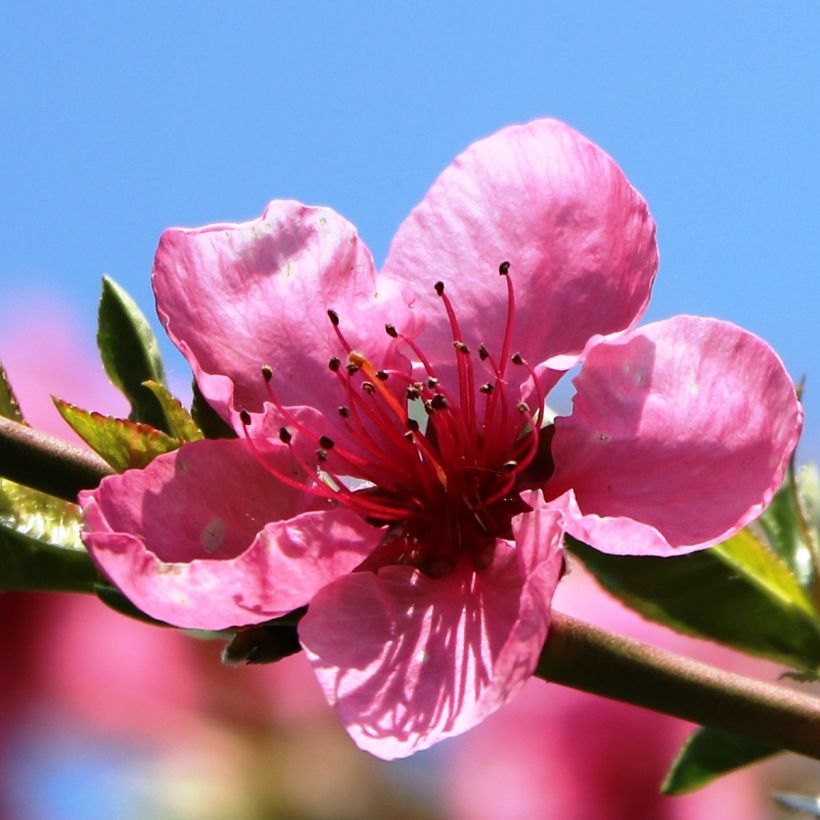

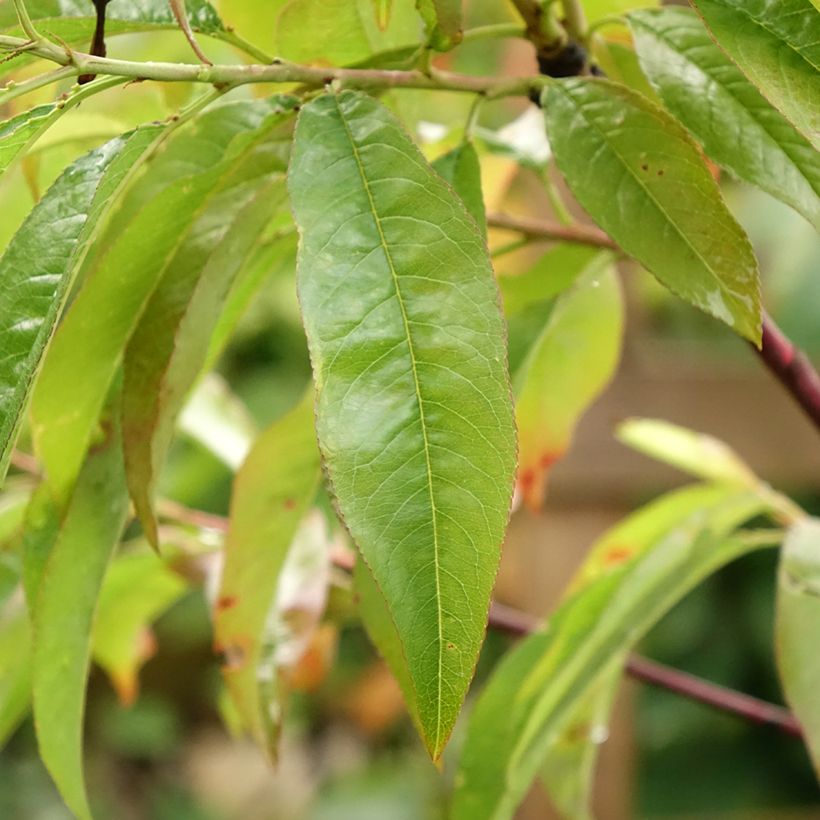

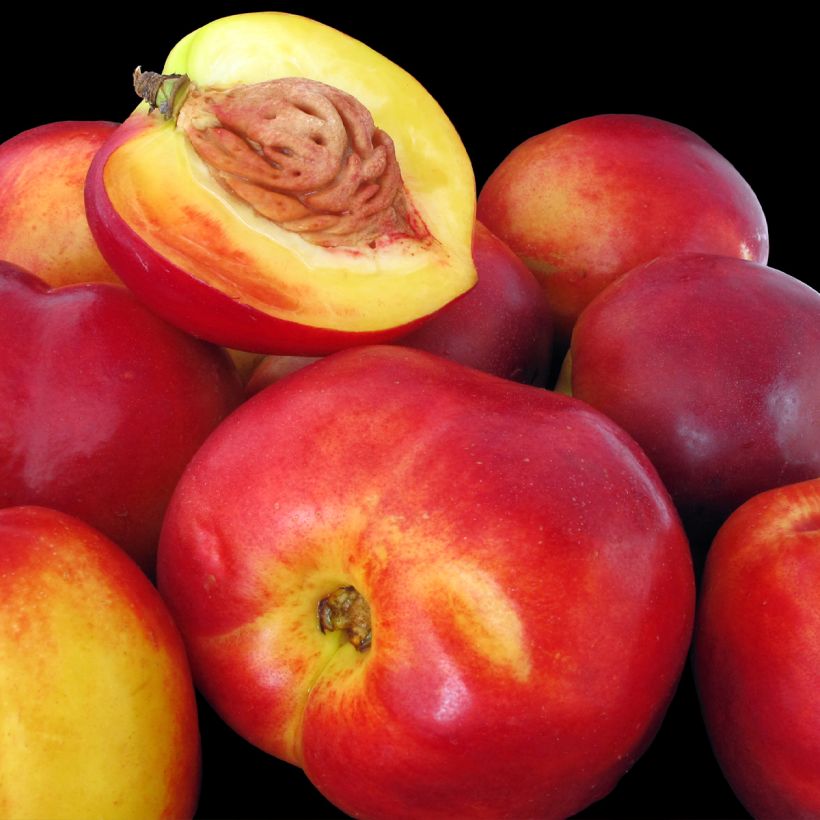

Plant habit
Fruit
Flowering
Foliage
Botanical data
Prunus
persica-nucipersica
Flavor Top
Rosaceae
Nectarine
Cultivar or hybrid
Other Peach and Nectarine trees
View all →Planting and care
The Nectarine tree is preferably planted from September to November, in full sun, in a warm and sheltered location. Dig a hole two to three times wider and deeper than the pot. Place the tree with its pot in a basin of water for fifteen minutes, in order to moisten the entire root ball by capillarity. Place compost at the bottom of the hole. Install the tree in the hole, fill with a mixture of soil and compost. Gently tamp around the base of the tree as you fill, ensuring that the roots are in close contact with the soil. The root ball should be completely covered, but its surface should be level with the ground. Water abundantly to eliminate any air pockets around the roots.
The Nectarine tree has a semi-pivot root system. It thrives in fairly deep, loose and fertile soils. It also prefers a light and well-draining soil. This tree grows in soils with a pH close to neutral (6 to 7), not appreciating either acidic or overly alkaline soils.
Planting period
Intended location
Care
Planting & care advice
-
, onOrder confirmed
Reply from on Promesse de fleurs
Haven't found what you were looking for?
Hardiness is the lowest winter temperature a plant can endure without suffering serious damage or even dying. However, hardiness is affected by location (a sheltered area, such as a patio), protection (winter cover) and soil type (hardiness is improved by well-drained soil).

Photo Sharing Terms & Conditions
In order to encourage gardeners to interact and share their experiences, Promesse de fleurs offers various media enabling content to be uploaded onto its Site - in particular via the ‘Photo sharing’ module.
The User agrees to refrain from:
- Posting any content that is illegal, prejudicial, insulting, racist, inciteful to hatred, revisionist, contrary to public decency, that infringes on privacy or on the privacy rights of third parties, in particular the publicity rights of persons and goods, intellectual property rights, or the right to privacy.
- Submitting content on behalf of a third party;
- Impersonate the identity of a third party and/or publish any personal information about a third party;
In general, the User undertakes to refrain from any unethical behaviour.
All Content (in particular text, comments, files, images, photos, videos, creative works, etc.), which may be subject to property or intellectual property rights, image or other private rights, shall remain the property of the User, subject to the limited rights granted by the terms of the licence granted by Promesse de fleurs as stated below. Users are at liberty to publish or not to publish such Content on the Site, notably via the ‘Photo Sharing’ facility, and accept that this Content shall be made public and freely accessible, notably on the Internet.
Users further acknowledge, undertake to have ,and guarantee that they hold all necessary rights and permissions to publish such material on the Site, in particular with regard to the legislation in force pertaining to any privacy, property, intellectual property, image, or contractual rights, or rights of any other nature. By publishing such Content on the Site, Users acknowledge accepting full liability as publishers of the Content within the meaning of the law, and grant Promesse de fleurs, free of charge, an inclusive, worldwide licence for the said Content for the entire duration of its publication, including all reproduction, representation, up/downloading, displaying, performing, transmission, and storage rights.
Users also grant permission for their name to be linked to the Content and accept that this link may not always be made available.
By engaging in posting material, Users consent to their Content becoming automatically accessible on the Internet, in particular on other sites and/or blogs and/or web pages of the Promesse de fleurs site, including in particular social pages and the Promesse de fleurs catalogue.
Users may secure the removal of entrusted content free of charge by issuing a simple request via our contact form.
The flowering period indicated on our website applies to countries and regions located in USDA zone 8 (France, the United Kingdom, Ireland, the Netherlands, etc.)
It will vary according to where you live:
- In zones 9 to 10 (Italy, Spain, Greece, etc.), flowering will occur about 2 to 4 weeks earlier.
- In zones 6 to 7 (Germany, Poland, Slovenia, and lower mountainous regions), flowering will be delayed by 2 to 3 weeks.
- In zone 5 (Central Europe, Scandinavia), blooming will be delayed by 3 to 5 weeks.
In temperate climates, pruning of spring-flowering shrubs (forsythia, spireas, etc.) should be done just after flowering.
Pruning of summer-flowering shrubs (Indian Lilac, Perovskia, etc.) can be done in winter or spring.
In cold regions as well as with frost-sensitive plants, avoid pruning too early when severe frosts may still occur.
The planting period indicated on our website applies to countries and regions located in USDA zone 8 (France, United Kingdom, Ireland, Netherlands).
It will vary according to where you live:
- In Mediterranean zones (Marseille, Madrid, Milan, etc.), autumn and winter are the best planting periods.
- In continental zones (Strasbourg, Munich, Vienna, etc.), delay planting by 2 to 3 weeks in spring and bring it forward by 2 to 4 weeks in autumn.
- In mountainous regions (the Alps, Pyrenees, Carpathians, etc.), it is best to plant in late spring (May-June) or late summer (August-September).
The harvesting period indicated on our website applies to countries and regions in USDA zone 8 (France, England, Ireland, the Netherlands).
In colder areas (Scandinavia, Poland, Austria...) fruit and vegetable harvests are likely to be delayed by 3-4 weeks.
In warmer areas (Italy, Spain, Greece, etc.), harvesting will probably take place earlier, depending on weather conditions.
The sowing periods indicated on our website apply to countries and regions within USDA Zone 8 (France, UK, Ireland, Netherlands).
In colder areas (Scandinavia, Poland, Austria...), delay any outdoor sowing by 3-4 weeks, or sow under glass.
In warmer climes (Italy, Spain, Greece, etc.), bring outdoor sowing forward by a few weeks.






























